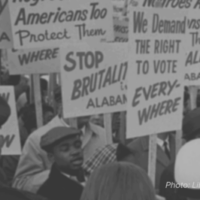The workers compensation system is in a deeply troubled state, with enormous financial and social costs for America’s workers.
Over the past two decades, state legislatures across the nation have been engaged in a race to the bottom in their workers compensation laws, resulting in unfair, weak or nonexistent benefits for injured workers. As a result, employers are covering only a small percentage of the cost of workplace injuries, forcing injured workers to rely on their own savings and on taxpayer-funded programs to pay most of the costs.
Reforms and federal oversight are needed to ensure that workers with occupationally related injuries and illnesses are provided with the medical and wage-replacement benefits they need. We must do better in taking care of injured workers and their families.
Workers compensation is the oldest social insurance program in the nation. It emerged over 100 years ago with the passage of the first state workers compensation law; today, this state-based system covers more than 129 million workers. The bedrock principle upon which every state workers compensation system was founded is the no-fault principle: Employers assume responsibility for providing insurance to cover medical treatment, rehabilitation, reimbursement for lost wages, and death benefits for workers injured or killed on the job – without regard to fault. Workers gave up their right to sue their employer for negligence, and employers gave up their right to blame the worker in what became known as the “grand bargain.” But today’s workers compensation system is failing workers – especially low-wage workers in dangerous industries.
People get hurt at work. Data from the Bureau of Labor Statistics shows that nearly 5,200 workers were killed on the job in 2016 in the United States, and more than 3 million suffered a serious work-related injury – and these numbers do not include the many workplace injuries that are never reported to the federal government.
Although these numbers have declined dramatically over the past four decades since passage of the Occupational Safety and Health Act, workplace safety hazards continue to cause serious and often fatal injuries and diseases. From the construction worker who fell from the roof because he was not provided fall protection to the young woman working in an assisted-living facility who was attacked by a patient, occupational hazards persist and continue to endanger workers.
A work-related injury can cause serious physical suffering and have enormous financial consequences for workers and their families. But due to recent changes in workers compensation laws in many states, the financial burden of work-related injuries now falls on the worker. As a result, injured workers are often at great risk of falling into poverty.
According to a 2015 report from the U.S. Department of Labor, Adding Inequality to Injury: The Costs of Failing to Protect Workers on the Job, almost 80% of the costs of workplace injuries – including medical bills, time missed on the job, and the loss of income to a household when a worker is killed on the job – are rapidly shifting from employers and insurers to workers, their families and the taxpayer-funded social safety net.
Further, an increasing number of studies confirm that only a fraction of injured workers apply to receive any benefits under workers compensation. A landmark study of more than 4,000 lowwage workers in Chicago, Los Angeles and New York published nine years ago found that among those workers experiencing a serious injury on the job, fewer than 1 in 10 (8%} filed for workers compensation benefits. These workers face an increasing number of barriers to filing a claim, including fear of retaliation from their employer and the current reality that a worker needs to have a lawyer to file a claim.
Many state compensation laws also continue to exclude entire occupations, such as farm workers and domestic workers – jobs often held by women and people of color. And many workers are in alternative work arrangements that put them outside the reach of workers compensation because they are considered by their employers to be independent contractors.
With no federal oversight or minimum standards, every state has a unique workers compensation law and system. The fairness of these state systems differ, often dramatically, on many issues that are critical to workers. Restrictions, often recently enacted, can include shortening of the length of permanent-disability benefits and coverage of work-related illnesses. For example, some states such as Mississippi cap benefits for permanently disabled workers at 450 weeks, while many others allow benefits for life or until the worker reaches the age for Social Security benefits. Some states exclude illnesses such as repetitive trauma disorders. And some states have strong laws to protect workers against retaliation or discrimination for filing a workers compensation claim, while others have none.
Almost 80% of the costs of workplace injuries … are rapidly shifting from employers and insurers to workers, their families and the taxpayer-funded social safety net.
You can read the Workers Compensation (WC) Summer 2018 in Workers Compensation – WC Magazine




